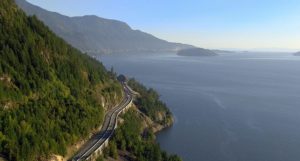
About the Talk
The Geology of Southwest British Columbia’s Sea to Sky Region
British Columbia’s Sea to Sky Highway (Highway 99, connecting Vancouver to Squamish, Whistler, and Pemberton) provides a journey through the geology of British Columbia’s Coast Mountains, where relief from valley floors to summits is commonly 1500-2000 m. The highway follows the steep fjord wall of Howe Sound past waterfalls, debris flow-prone gullies, rockfall hazards, glacial erosion features, and the Britannia Beach copper mine (operational until 1974), before arriving in Squamish. The town of Squamish sits at the head of Howe Sound and is located near the 700 m cliffs of the granitic monolith, the Stawamus Chief, as well as the dormant volcano, Mount Garibaldi, and a debris fan comprising mainly volcanic material from Mount Garibaldi, including material that was originally deposited supraglacially before being remobilized when the Cordilleran ice sheet disappeared. North of Squamish, the Sea to Sky Highway climbs from a floodplain and winds its way through the Cheakamus River canyon, with views of the mountains and glaciers of the Tantalus Range to the west. The vertical cliffs of the Barrier mark the site of a mid-nineteenth century landslide from an andesite lava flow that ponded against remnants of the Cordilleran ice sheet during the waning stages of the Fraser Glaciation. At Brandywine Falls, the Brandywine River cascades over a stack of basaltic lava flows and drops 70 m into a canyon. A series of lava flows of Cheakamus basalt next to the highway show evidence for eruption beneath or beside ice. In Whistler, the gondolas to the top of the ski slopes allow for broad views of the geology of the Coast Range, including the volcano, Mount Cayley, located 15 km west of Whistler (but not visible from lower elevations). North of Whistler, Nairn Falls, located 1.5 km from the highway, has numerous large potholes and other features eroded by water. The town of Pemberton lies about 60 km southeast of the volcano, Mount Meager, which in 2010 was the source of the largest historic landslide in Canada (about 49 million m3). Although Mount Meager occupies only 2.5% of the area of the Lillooet River watershed, it is the source of 25-75% of all the sediment deposited in the Lillooet River valley during the Holocene. Three prehistoric debris flows from Mount Meager, including one contemporaneous with its 2350 BP eruption, reached as far as currently inhabited areas of Pemberton. This eruption, the only known explosive Holocene eruption in Canada, left an ash layer that today can be traced as far as central Alberta, more than 500 km downwind.
Read about the Sea to Sky GeoTour…
About the Speaker

Melanie Kelman is a volcanologist with Natural Resources Canada (NRCan) in Vancouver. She first became interested in geology as a child, when her father, a hobby rock collector, took the family to quarries, gravelly lake shores, and mine dumps around western Canada and the United States. She completed a B.Sc. at the University of Saskatchewan in 1994, an M.Sc. at Oregon State University in 1998 (studying altered seafloor rocks from the Tonga trench in the southwest Pacific), and a Ph.D. at the University of British Columbia in 2005 (studying volcano – ice interaction at southwest BC’s Mount Cayley volcanic field). After brief stints working in the industry, drilling for metallurgical coal and then looking for gold in ancient volcanic rocks, Melanie started work with NRCan in October 2007 during the Nazko region volcanic seismic swarm (which did not lead to an eruption). She currently devotes her time to volcanic hazard research, volcano emergency planning, and the preparation of educational materials. If volcanic unrest were to occur again in Canada, she would play a major role in monitoring, hazard assessment, and eruption forecasting.
Melanie Kelman in the news…
Kamloops This Week 2017 Volcanoes in B.C…
CBC 2016 Dormant B.C. Volcano…

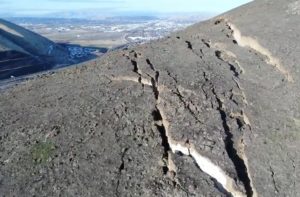
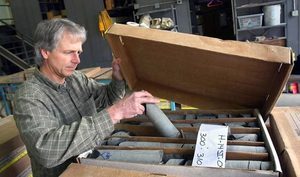
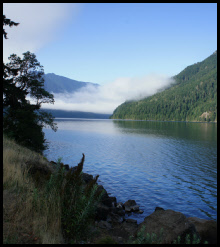
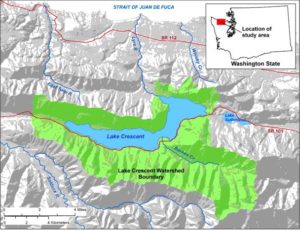
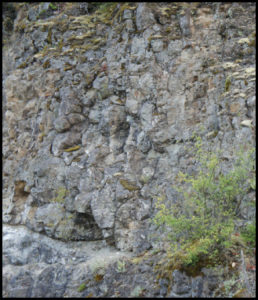 Crescent Basalt: Flows of black pillow basalt striking approximately east-west and dipping steeply (~85°) north. Pillows show that the lava was extruded onto the seafloor where it chilled rapidly into a solidified mass. This basalt dates from 53 to 45 million years ago when it rose at a sea floor spreading center. Spreading carried it continentward, and subduction jammed it into the margin of North America.
Crescent Basalt: Flows of black pillow basalt striking approximately east-west and dipping steeply (~85°) north. Pillows show that the lava was extruded onto the seafloor where it chilled rapidly into a solidified mass. This basalt dates from 53 to 45 million years ago when it rose at a sea floor spreading center. Spreading carried it continentward, and subduction jammed it into the margin of North America.